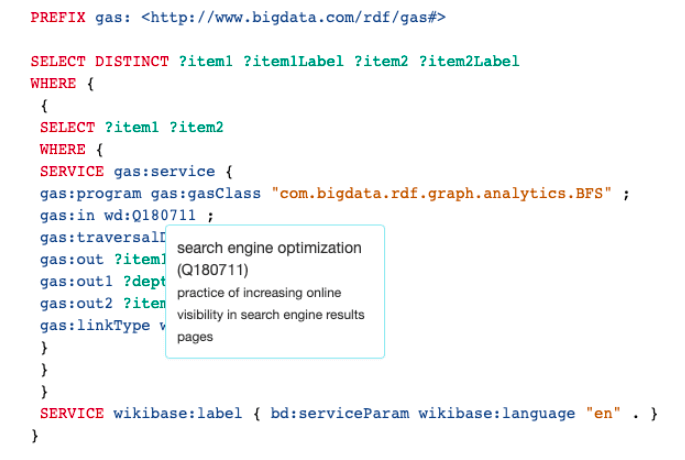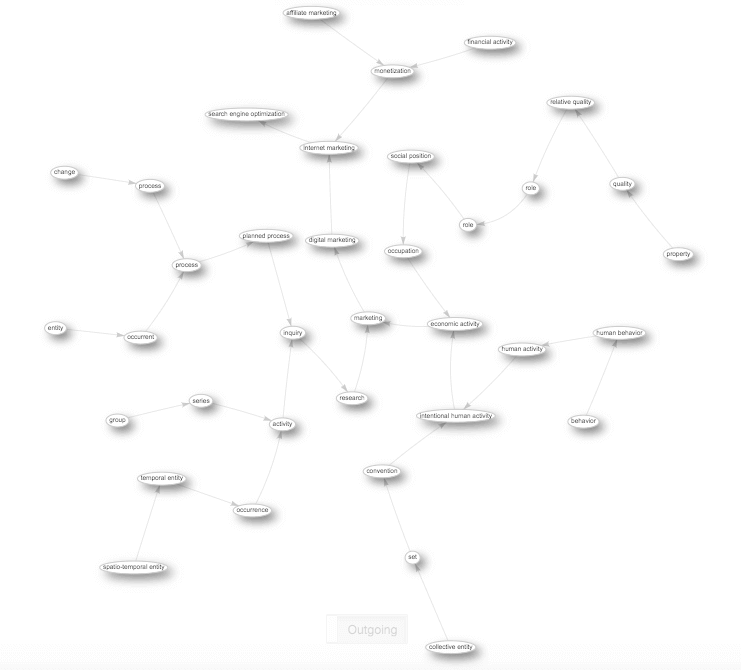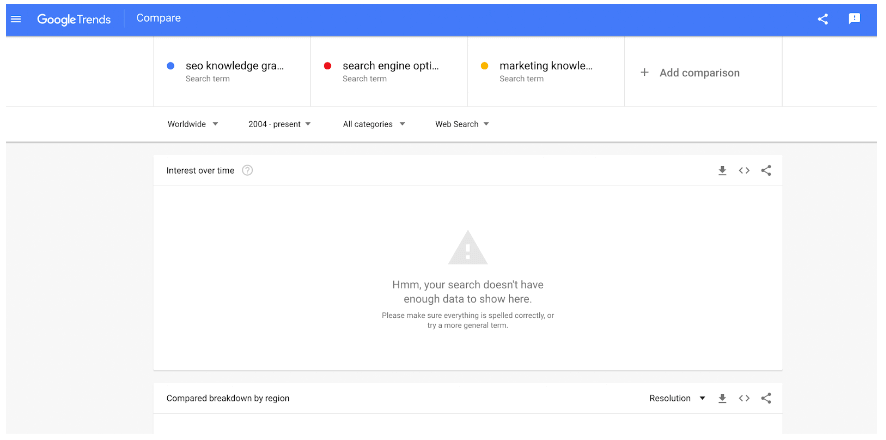How to Build SEO Demand Strategies By Using Knowledge Graphs
Discover the difference between serving and creating a demand and learn how to build smart SEO demand strategies with knowledge graphs.
Table of contents:
- Serving and creating SEO demand strategies
- The problem with third party data aggregators and brokers
- How to build proper SEO demand strategies by using knowledge graphs
- Developing a experimentation mindset with AI and semantic technologies
- Other frequent questions
Serving And Creating SEO Demand Strategies
In the world of marketing tactics, almost all of them fall into two strategic groups: serving existing demand and developing awareness to create demand. What does this actually mean and how can you distinguish between these two in order to act strategically?
When people want to meet the needs of searchers (and we can attest to this from experience), they usually want to rely on some third-party data tools to get keywords, entities, related concepts, questions, and contextual analysis to match them with their search personas. You can also accomplish this by scraping and analyzing data from online forums like Reddit or Quora to help you match existing user queries for more specific problems. This is the traditional approach.
While this may be true for many business cases and industries, a great opportunity is missed when there is a lack of a holistic approach that includes developing awareness to create demand for your product or service. Why is this?
The Problem With Third Party Data Aggregators And Brokers
Because in order to provide data to end users, third-party data aggregators and brokers need to collect enough data to be of interest to end users like you
The first problem? Targeting the data. That’s difficult if you want to attract more potential customers online, because:
- The data is not 100% accurate and this includes both web analytics and campaign tracking. So, basically the typical directional data will tell you the following:
- If you are spending time and money on the right sites and keywords, you secure business results, otherwise you should pull your money out from non-performing keywords (or keyword groups);
- Directional data also forces the mindset that “if you invest in X keywords, you will get Y organic traffic back”. This is a big problem here because it puts limitations on your thinking system and it is problematic when managing expectations. Why? Because they are not necessarily overlapping with the real life scenarios (in a bad way but also in a good way, so there is a real chance that you are missing out on some great opportunities out there).
- Your searchers can come from small places where there is no enough data for keyword research, because the keywords that are collected cannot be assigned to a satisfactory search volume (usually at least 10-100 searches for a given keyword and area on a monthly level);
- Your searchers may be researching things in a way that is too specific and unique and does not resemble the way the global audience searches, so their searches are underrepresented in these keyword research platforms. Upssie.
Now, while you may prefer a keyword or customer research strategy based on sufficient demand data (meeting the requirements halfway), you now see that this is a big missed opportunity for two reasons:
- It is very likely that your competition is also focused on meeting demand rather than creating demand and following the casual keyword research process;
- You are missing out on huge audiences because you are taking an outdated, unholistic approach. For example: 10,000 high conversion keywords (based on intent analysis or Google Ads testing) that have less than 10 searches a month are more valuable than 1 million generic low or medium competition keywords that have questionable or hard to reach conversion rates. Besides, your competition is after these keywords anyway because they use the same SEO stack for keyword research as you do.
The idea of keyword search volume highlights the fact that you should optimize a page for a keyword. And if you do not know the search volume for a particular keyword, how can you develop an appropriate demand strategy?
How To Build Proper SEO Demand Strategies By Using Knowledge Graphs
WRONG. To build appropriate demand for your online searchers, for which there is no user data to draw on, it’s smart to use content-based features or hubs that help you understand how your topic relates to other topics of interest and how you can use those connections to build an intelligent, data-driven content strategy.
We humans do not have the ability to look holistically at the Web, with its more than 1 billion pages produced on a regular basis. We can not recognize the concepts that are tightly interconnected to the extent that machines can. It’s just in our nature, in our way, to analyze this amount of data in a short period of time. That’s why we have to enlist the help of machines and their artificial intelligence capabilities.
Developing A Experimentation Mindset With AI And Semantic Technologies
At WordLift, for example, we experimented with advanced AI and semantic technologies some time ago and leveraged their power to create appropriate title tags by analyzing the semantic similarity between the intent and the content we could capture (this is important when building for appropriate demand).
There are two interesting perspectives here.
The first one is leveraging the power of the “semantic tree” or better we should say a directed graph by using the Wikidata P279-property (subclass of). This is how the SPARQL statement looks like -> https://w.wiki/5qPm

We work with the entity Q180711 – SEO. and here is how the term directed graph looks like -> link. This way, we can practically use this output to start sculpting for demand for the disambiguated entity-based SEO.

In summary, we intend to provide an initial concept and then build the directed graph from that concept to obtain all the connected concepts that exist in the world of knowledge graphs. This provides a unique way to obtain related concepts in a more structured, intelligent and reliable way than traditional keyword search platforms.
Another option is to use embeddings, where we can use the power of semantics to find the relevant context using a web service for querying an embedding of entities in the Wikidata knowledge graph. By using both approaches, we should be able to answer two questions:
- How are things and concepts connected in giant graphs like Wikidata and DBpedia?
- What do we have in stock – what content is available in our content knowledge graph and where are we truly authoritative?
Both approaches scale well regardless of the knowledge domain and help us decode the semantic tree. That’s why we, WordLift, regularly invest in building internal capacity and tools that support our work in research and content production.
Here is an example for our business that we can analyze together with you. If you search for [“seo knowledge graphs”], [“search engine optimization knowledge graphs”] and [“marketing knowledge graphs”], nobody has been searching for them on a worldwide level, since 2004. According to this data and traditional keyword research processes, these concepts are not attractive enough and definitely not something worth working on and investing in.
However, we have clients in our portfolio that have invested (and are still investing) a lot of money to get ahead in applying knowledge graphs for marketing purposes. This is a perfect example of why traditional keyword research tools simply do not work well unless you incorporate content-based features and knowledge graphs into the process.

Long story short, a major flaw of traditional keyword research tools is that they fail to identify future trending terms. Most keyword research tools are not good at capturing this sudden surge in search demand, and it takes a while for search volume data to show up in them.
That’s why you need to prioritize your ideal customer profile over the search volumes and metrics that traditional keyword research software forces on you.
We first create the search persona, determine the basic topic (source topics) we will write about in our niche industry, and then use the power of content features to further enhance our content by connecting it to semantically similar articles or those that are close to our topic of interest in the graph-based world. This is a data-driven way to simultaneously consider intent, content, and context.
Ready to try this for your business today? Book a Demo with one of our SEO experts.
Start performing Semantic Keyword Research with the New SEO Add-on for Google Sheets™
Other Frequent Questions
Is SEO a demand generation?
If executed properly, search engine optimization (SEO) can be the highest return of investment (ROI) channel in demand generation. It can bring more customers at a lower customer acquisition cost (CAC). It is great for creating awareness (top of the funnel) but also useful when going towards the bottom of the funnel.
What are the main strategies in SEO?
There are many creative SEO strategies worth mentioning but we can say that on-page SEO, off-page SEO, technical SEO and content marketing are among the main ones.
What is the best SEO strategy in 2022?
Modern SEO developments will move more towards AI, linked-data and knowledge engineering. Therefore, it is smart to invest in knowledge graph-based approaches that utilize the power of AI and linked data at the same time.